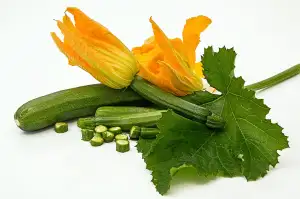Mastering Chicken Temp: The Ultimate Guide to Cooking Chicken at the Right Temperature

Cooking chicken to the correct temperature is crucial for both taste and safety. The internal temperature of chicken determines its doneness and ensures that harmful bacteria like Salmonella are destroyed. Understanding the right temperature to cook chicken can help you achieve juicy, tender meat every time. By mastering the art of cooking chicken at the right temperature, you can elevate your culinary skills and create delicious dishes that are safe to eat. Let's delve into the world of chicken temp and unlock the secrets to perfectly cooked poultry.
Importance of Cooking Chicken to the Right Temperature
Cooking chicken to the right temperature is crucial for food safety. Chicken can harbor harmful bacteria like salmonella, which can only be killed by thorough cooking. Undercooked chicken poses a risk of foodborne illnesses, leading to symptoms like nausea, vomiting, and diarrhea. By ensuring chicken reaches the recommended internal temperature, you can protect yourself and your loved ones from potential health risks associated with consuming undercooked poultry.
Recommended Internal Temperature for Chicken
To ensure chicken is safe to eat, it is crucial to cook it to the right internal temperature. The USDA recommends that chicken should be cooked to an internal temperature of 165°F (74°C) to kill any harmful bacteria like Salmonella and Campylobacter. Using a food thermometer is the most accurate way to check the temperature of the chicken. Insert the thermometer into the thickest part of the meat without touching bone or fat for an accurate reading. Remember, reaching this temperature ensures both safety and juiciness in your cooked chicken.
Tips for Checking Chicken Doneness
When checking the doneness of chicken, there are a few reliable methods to ensure it is cooked thoroughly and safely. One popular method is using a meat thermometer inserted into the thickest part of the chicken without touching bone. The internal temperature should reach 165°F (74°C) for safe consumption. Another way is to make a small cut in the thickest part of the meat – if the juices run clear without any pink tinge, it's likely done. Additionally, the texture of properly cooked chicken should be firm but still juicy, not rubbery or overly soft. By following these tips, you can confidently serve perfectly cooked chicken every time.
Common Mistakes to Avoid When Cooking Chicken
When cooking chicken, there are common mistakes that can lead to undercooked or overcooked meat. One mistake is not properly thawing the chicken before cooking, which can result in uneven cooking. Another mistake is overcrowding the pan or grill, which can prevent the chicken from cooking evenly. Additionally, flipping the chicken too often can disrupt the cooking process and lead to dry meat. Lastly, not allowing the chicken to rest after cooking can cause juices to escape, resulting in a less juicy final product. By avoiding these common mistakes, you can ensure perfectly cooked chicken every time.
Ensuring Food Safety with Proper Chicken Temp
Ensuring food safety is paramount when cooking chicken. Properly cooking chicken to the right temperature helps eliminate harmful bacteria like salmonella, which can cause foodborne illnesses. The recommended internal temperature for chicken is 165°F (74°C) to ensure that it is safe to eat. Using a meat thermometer is the most accurate way to check if the chicken has reached this temperature. By following proper cooking temperatures and techniques, you can enjoy delicious chicken dishes without compromising your health.
Mastering the art of cooking chicken at the right temperature is essential for ensuring a safe and delicious meal. By understanding the recommended internal temperature of 165°F (74°C) for chicken, you can guarantee that your poultry is cooked thoroughly and free from harmful bacteria. Remember to use a meat thermometer to accurately check for doneness and avoid common mistakes like overcooking or undercooking. Prioritizing food safety by following proper cooking temperatures not only enhances the flavor of your dish but also protects you and your loved ones from foodborne illnesses. So, next time you prepare chicken, remember that precision in temperature control is key to culinary success!
Published: 05. 05. 2024
Category: Recipes



